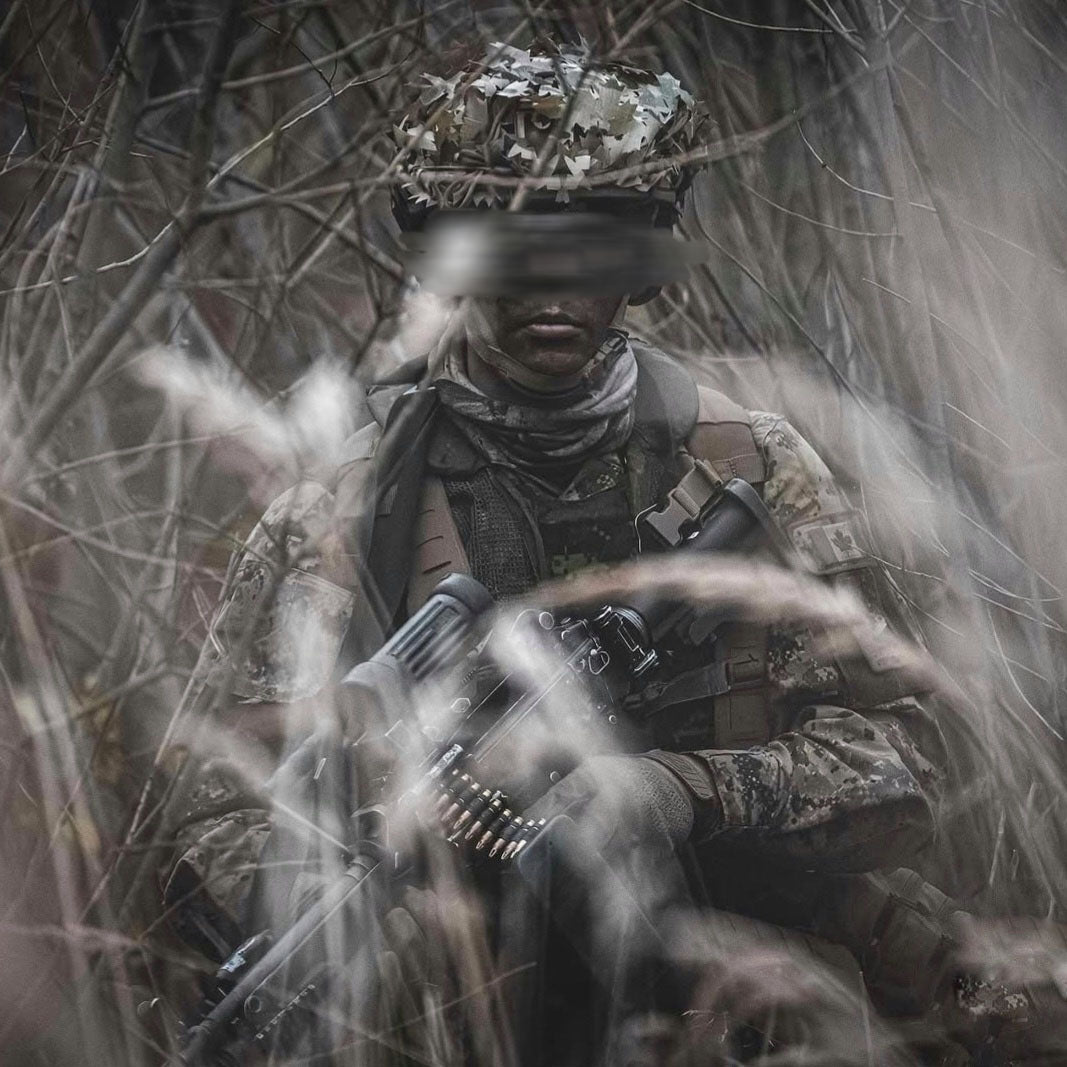Camouflage Face Paints for the Face: Reduce Visibility Through Tactical Makeup
Blend into your surroundings? It's a decisive skill in military, hunting, or survival contexts. The face poses a problem: its natural shadows and prominent zones make it vulnerable to visual detection. Well-chosen and properly applied camouflage paints "break" that visibility. They multiply your chances of staying concealed.
This blog explores four pillars. First: effective application methods. Next: criteria for selecting the best products. Then: the operational importance of facial camouflage through history. Finally: common pitfalls and answers to frequent questions.
1. Techniques for Camouflaging the Face — How to Apply Effectively | Camouflage Face Paints
Skin Preparation
Before applying paint, prepare your skin carefully. Clean your face first. Remove accumulated sweat, sebum, dust. Why? Better adhesion. Then apply a thin layer of moisturizing cream, no SPF, no shine. This prevents the paint from cracking.
Choose your colors next based on your environment. Opt for a palette of three to four shades: a dark tone, an intermediate one, a light one. This modulation creates depth.
Types of Paints and Their Characteristics
Paints come in three main formats.
Cream offers good coverage and blends easily. It adheres well to skin. Sometimes greasy, it can run in hot climates. Favor it for long missions in moderate environments.
The stick or push-up tube applies directly, without accessories. Compact, easy to carry. Less modular however, sometimes less covering. Ideal for quick touch-ups in the field.
Liquid tactical formula holds well at low temperatures. It fades in humid conditions. Reserve it for cold zones or intense cold use.
Three criteria unite all good products:
- matte finish,
- formulation without shine,
- complete water resistance,
- and zero transfer onto clothing.
Application Based on Facial Relief
The objective? Visually flatten your face’s volumes. In other words, play with shadow and light to reduce trait recognition. This method sometimes bears the name of the Ghost Face technique.
Start with prominent zones: forehead, bridge of nose, cheekbones. Apply a dark shade to them. It "pushes back." On concave zones—nose sides, cheeks, hollows under cheekbones—place a lighter shade. It "brings out" these zones.
Blend the transitions. Avoid sharp lines that scream presence. Don't use pure black excessively. Too much black creates contrast that's too strong. It betrays presence instead of concealing it.
One useful trick exists: trace a star pattern. Cover forehead, nose, cheekbones, chin with the branches. Fill the zones between them. This ensures even coverage, without symmetrical patterns that catch the eye.
Adaptation to Terrain
Forest and wooded zones: olive green, brown, black, dark brown. Mix them to mimic foliage and trunks. The concept exploits disruptive coloration to break recognizable outlines.
Desert and arid zones: sand, warm beige, light khaki, medium brown. These shades absorb the harsh light of dry expanses.
Snow and polar zones: off-white, light gray, very pale beige. No violent contrast.
Use a color arrangement in small irregular blocks. Break the natural symmetry of your face. Don't think "pattern": think "visual interruption."
Verification and Maintenance in Real Conditions
After application, observe yourself at a distance. A few meters away, ambient light. Spot "white" zones or overly sharp areas that betray presence. Carry a cloth, a wipe. Correct smudges or retouch on the go. If humid weather or perspiration threatens adherence, apply a matte setting spray. It prolongs the effect.
2. Selection of Camouflage Paints — Comparison and Buying Guide | Camouflage Face Paints
Essential Criteria
Choosing a facial camouflage paint requires six clear criteria.
Durability: the paint must resist friction, sweat, abrasion. No rapid discoloration.
Water resistance: zero transfer. The product must not run in rain or on contact.
Texture and application: it glides effortlessly while remaining covering.
Color palette: multiple shades allow adjustment based on terrain.
Matte finish: no shine capable of betraying your position.
Skin safety: hypoallergenic, essential near the eyes.
Brief Comparison
| Brand | Durability | Water | Application | Price |
|---|---|---|---|---|
| Nutsof Tactical Pro | ★★★★★ | ★★★★★ | ★★★★☆ | $$ |
| CamoFX Elite | ★★★★☆ | ★★★★★ | ★★★★★ | $$$ |
| MilTech Stealth | ★★★★★ | ★★★★☆ | ★★★★☆ | $ |
| Army Grade Camo | ★★★★☆ | ★★★★☆ | ★★★☆☆ | $$ |
Extended missions? Favor robust paints: Nutsof Tactical Pro delivers.
Humid environment? Prefer waterproof formulation: CamoFX Elite excels.
Training or recreational use? An economical compromise suffices: MilTech Stealth.
Popular Products
Rothco offers compacts with different “military spec” shades — olive, sand, gray — suited to many contexts. Meanwhile, Mil-Tec provides a 5-color kit with integrated mirror, compact and portable. Finally, CamCon push-up offers a stylized alternative: dual-end, push-up tube, easy to remove with water and soap.
These examples serve as comparison points for your own products.
3. Strategic Importance of Facial Camouflage | Camouflage Face Paints
History and Tactical Evolution
World War II
Facial camouflage use became widespread during conflicts of this era. At the Normandy landings (1944), soldiers used green and black patterns. Where? In French hedgerows and bocage. Why? To break the profile through disruption.
The German Afrika Korps? It used sand and beige shades to blend into North African desert. It exploited visual concealment in arid expanses.
Vietnam War
Dense jungle in Vietnam imposed evolution. As a result, combinations changed: dark green plus black, applied in irregular patterns. Why? Avoid the face becoming a visible "mask." Special forces like Navy SEALs personalized their designs. They sought connection to the local environment.
Contemporary Conflicts
Nowadays, operational theaters — Afghanistan, Iraq, urban zones, mountains — demand constant adaptation. Consequently, facial camouflage must now account for new threats: drones, thermal imaging. Makeup becomes one component among others. Uniforms, nets, IR devices complete the strategy.
Facial Camouflage in Survival and Hunting
Survival and bushcraft: remaining invisible prevents confrontation. Facial camouflage reduces light zones on your face. It deceives the human eye.
Hunting: especially for big game—deer, boar. Well-applied makeup allows approach without visual capture. The animal doesn't notice you. Especially in wooded zones with shadow and light alternation.
Nature leisure activities: wildlife observation, animal photography. Facial camouflage complements the strategy. You approach without startling, without movement detection.
Peacetime Uses
Paintball and airsoft: often the game hinges on visual discretion. Facial camouflage provides real tactical advantage.
Nature observation and animal photography: to appear inconspicuous to animals, a less visible face changes everything.
Anti-surveillance and digital camouflage: research on CV dazzle—camouflage to fool facial recognition software—shows that contrasting patterns disrupt modern facial detection algorithms. Fascinating.
4. Common Mistakes and Best Practices | Camouflage Face Paints
Even the best paint fails if poorly applied. Here are common errors.
Forgetting Peripheral Zones
Cover only the main face? Insufficient. Ears, neck, visible hands—all must be camouflaged. Otherwise, light zones expose your presence.
Inappropriate Color Choice
Use "default" colors without aligning them to terrain? It fails. Beige in forest catches the eye. Too-bright green in desert too. Always adjust your palette to terrain.
Overly Regular Patterns
Ordered patterns or parallel stripes catch the eye. The goal is to break the silhouette, not draw it further. Favor the irregular, the off-center, the diverse.
Black Overuse
Pure black used excessively appears as a visible "stain." It's the opposite of the goal. Use it sparingly. Place it in deep hollows or as accent. Always combine it with other mid-tone shades.
Neglecting Field Maintenance
Without retouches, paint fades or chips. Always carry retouching tools: stick, brush, wipes. Correct tired zones before they betray you.
Application in Uniform Light
Don't rely solely on direct light. Examine your camouflage under varied conditions. Shadow, backlighting. That truly evaluates its effectiveness.
5. FAQ — Frequently Asked Questions
Is Camouflage Makeup Dangerous for Skin?
No, if you choose non-comedogenic, hypoallergenic, dermatologically tested products. Avoid formulations containing alcohol or aggressive perfumes. Do a skin test beforehand. It's prudent.
How Often Should You Reapply Paint?
It depends. In humid or intense zones, every 2 to 4 hours may be necessary. In moderate conditions, it lasts all day. Sweat and friction accelerate wear.
Can You Use Facial Camouflage in Rain?
Yes, provided you use waterproof paints with minimal transfer. Applying a matte setting spray prolongs adhesion.
Is It Possible to Camouflage Dark or Tanned Skin?
Yes. Use tone variations close to your complexion. Earth tones, khaki, medium brown. "Break" the reliefs rather than uniformize. It's more effective.
Does Facial Camouflage Work Against Night Vision or Thermal Imaging?
No, standard paints don't alter thermal signature. Certain techniques—IR paints, pads, specific devices—can help in technological context. But that lies outside standard paint scope.
Conclusion
Mastering the art of facial camouflage paints requires four elements. Good preparation. Sound product choices. Application adapted to terrain. Rigorous retouching management.
This mastery determines real effectiveness. Military professional, hunter, paintball player, or field photographer—knowing how to conceal your face changes everything. It's a skill that makes the difference.
Best regards,
The Nutsof Team
Advanced Camouflage & Defense Solutions
🌐 www.nutsof.com
Follow us on Facebook and Instagram for the latest in advanced military camouflage technologies.


